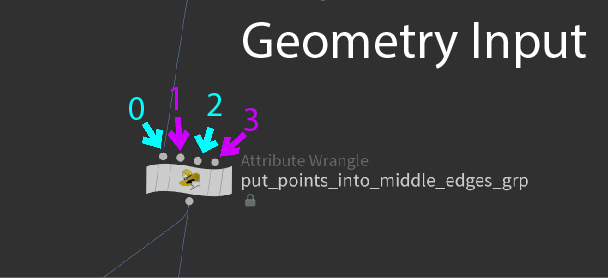SDF used to Deform Geometry
Building upon that collision detection, we can also use the SDF to deform the object upon the collision. Using the SDF value and some math, the grid can be deformed to create footprints stamped on by the Torus.
SDF (Signed Distance Field) used to Detect Overlapping Objects
SDF is short for signed distance field and describes the interior volume of an object. How thick an object is from the middle to the surface? How deep does the cylinder extend? From any point inside an object, using the SDF, it is possible to easily grab the distance to the surface of the object in order to know the depth.
Sine Wave Animated Motion
Step by step mathematical explanation of the Sine Wave function and how it’s used in defining motion. Increasing the frequency and increasing the amplitude and flipping the entire curve function.
Loops in Houdini vs Coding
Javascript vs Houdini. Demo of Javascript code of a simple 2D Version of a Houdini Foreach Loop scene that eats away at a cube. This is a quick demonstration of how coding line by line is different from the nodes in Houdini, but similar because they are derived from the same concepts.
Modeling Thickness & Hollow Interior using Procedural Workflow in Houdini
I demonstrate how to use a procedural workflow to create a bottle geometry from scratch. This project finishes off from the previous project and makes it more complete by hollowing out the interior of the bottle geometry and adds thickness to the edges. And also still using a procedural workflow.
Procedural Modeling in Houdini
Procedural Modeling has infinite possible ways of doing things, and the way Houdini does its point number assignment makes it very convenient to write VEX code to automate things. Using VEX into your procedural modeling workflow is a huge advantage.
Export Height Fields to UE4
This post will go over some tips on how to export the Height Field terrain as an HDA (Houdini Digital Asset) and import it into Unreal Engine as a playable environment or game asset.
Tunnel Building for Height Field Terrains in Houdini
Houdini’s Height Fields provides a simple and fast way of building complex landscape geometry, but what if I wanted to hull out areas in the terrain to make a tunnel? Cave? Secret underground path for a game?
Manipulate Height Fields with Volume VOP's in Houdini
Volume VOP’s (visual operators) are extremely powerful! Volume VOP’s like any other VOP nodes in Houdini is multi-threaded and all operations are run in parallel utilizing all the cores in your computer. Fast and flexible, who could ask for more?
PointVOP Basics in Houdini
Everything inside a VOP (visual operators) node is multi-threaded and makes use of the multiple cores in your computer. You are given a wide range of attributes that inherit the values from the connected parent node, which can then be used for further manipulation inside the Point VOP node.
Math behind the Mask by Feature Ramp Remapped Values
This is an explanation of the math behind how the Height Ramp in the Height Field Mask by Feature node in Houdini is calculated.
Building Terrain with Height Fields in Houdini
Houdini’s Seamless Integration with Height Fields. The Height Fields fit in very nicely with the rest of Houdini’s infamous simulation tools. I can create a random test terrain within a minute and then use it for fracturing in a destruction simulation right away.
Volume, Core Concepts in Houdini
Core concepts for Volumes. How exactly is volumes made up of voxels? How can you picture it? If you’re new to volumes, this is a great refresher.
Volumetric Scattering in Houdini & Redshift
Guide through Light Parameters & Redshift Render settings for Volumetric Scattering in Houdini scenes.
"set_density" Deep Dive into the Math Behind It
This post explains a specific node, “set_density” and how the math works in calculating the density attribute. I’ll try to explain the math behind it and how the node works.
FLIP sim & Whitewater | Quick Tip on Houdini's Shelf Tool
Create whitewater on FLIP Fluids with a few mouse clicks using Houdini’s Shelf Tool!
Redshift Volume Material in Houdini
Rendering volumes in Houdini. Learn how to setup a Redshift volume material and use volume primitives to drive the material renders.
SideFX Siggraph 2019
SideFX’s Siggraph 2019 presentation was held in Los Angela’s on July 30, this past Tuesday at the time of writing this. SideFX announced Solaris to the public and mentioned many impressive updates that out coming out to Houdini in the upcoming release. In Houdini 18, we’re going to get a new context window that will take advantage of USD (Universal Scene Description) and a new CPU renderer named Karma replacing Mantra.
Ocean Geometry in Houdini
Houdini probably out done themselves with the set of Ocean tools in the software. You can create very decent ocean surface geometry with just 3 nodes! And the default settings produce pretty good results. It even gets better, it’s so fast!




















